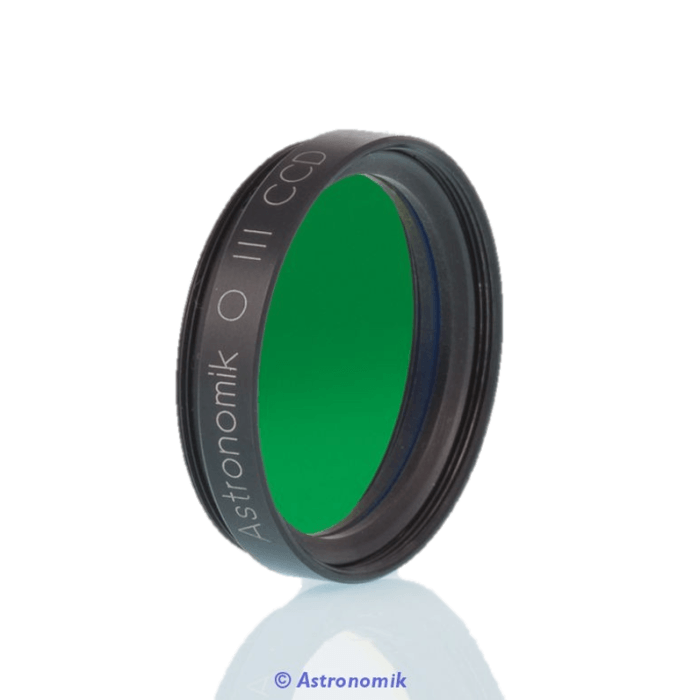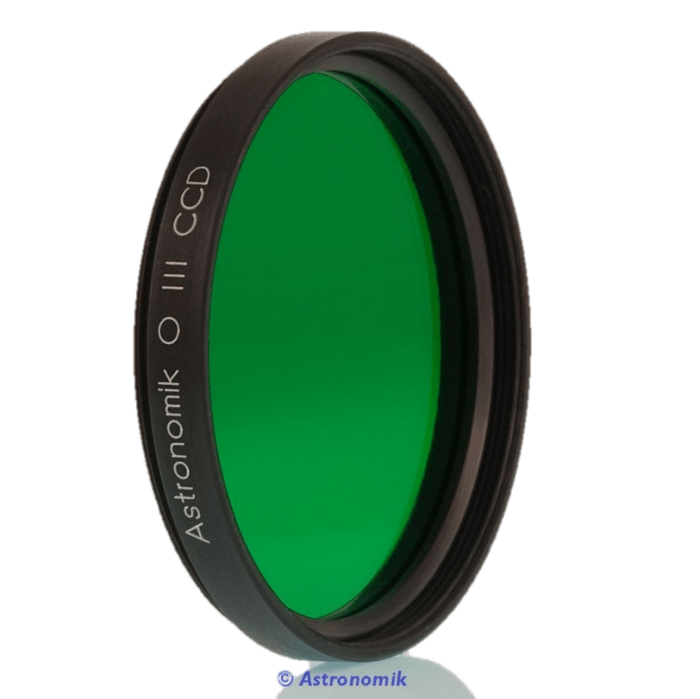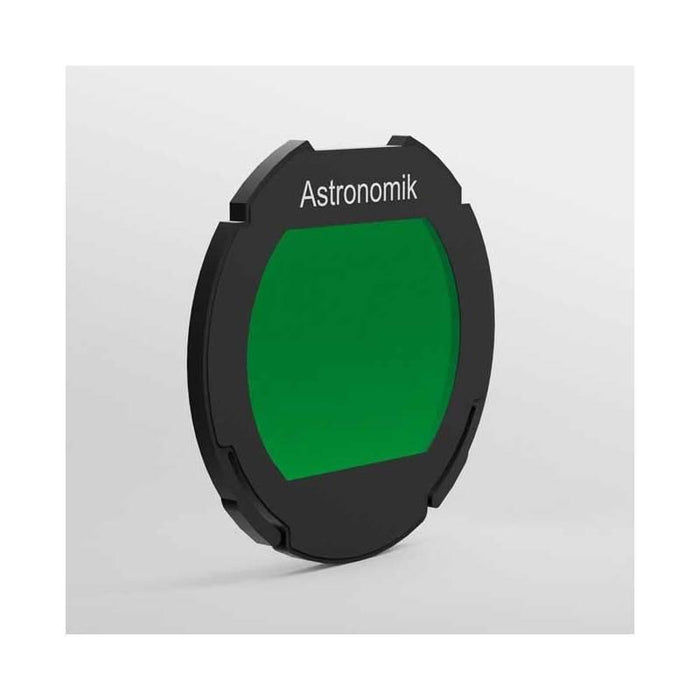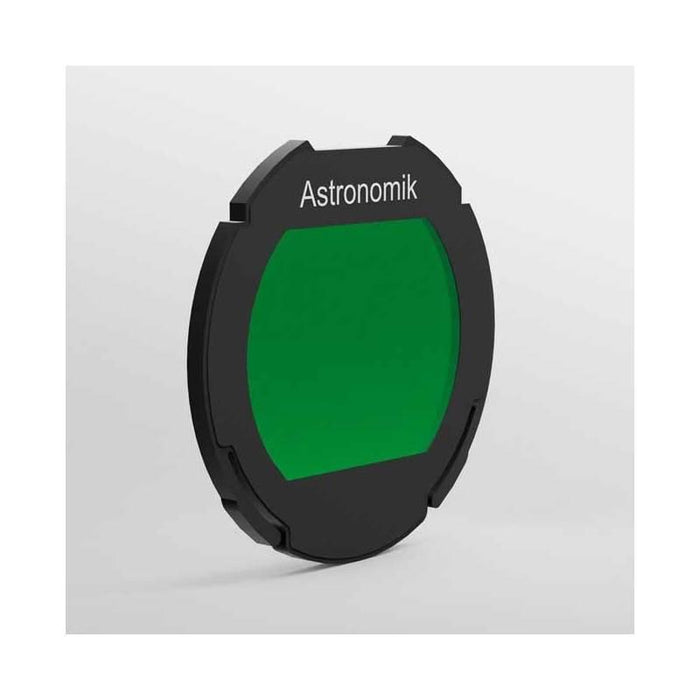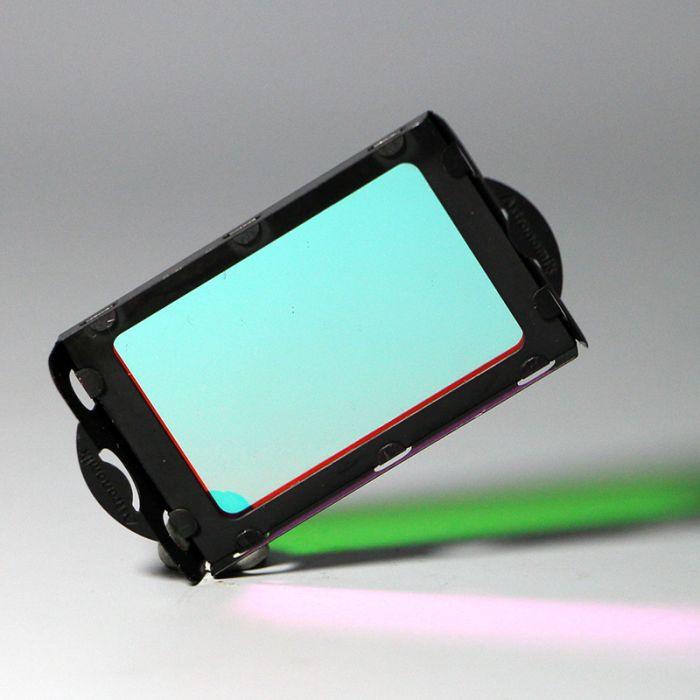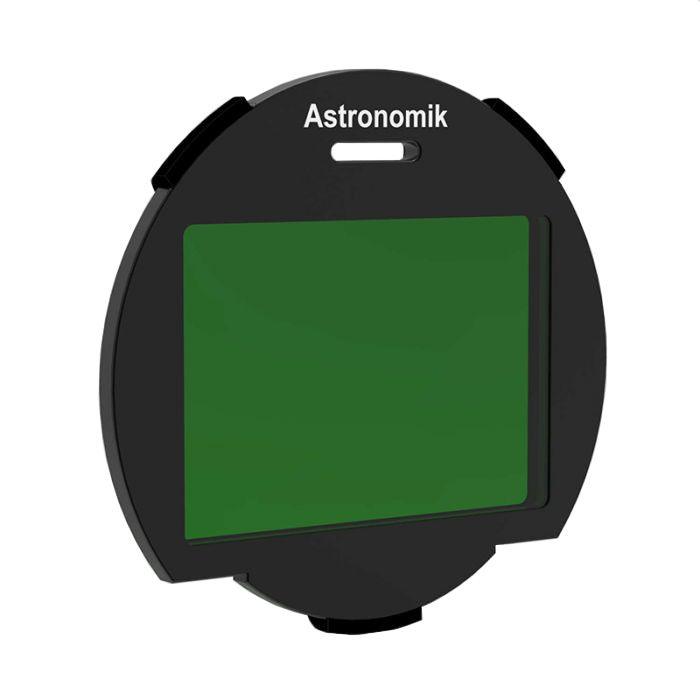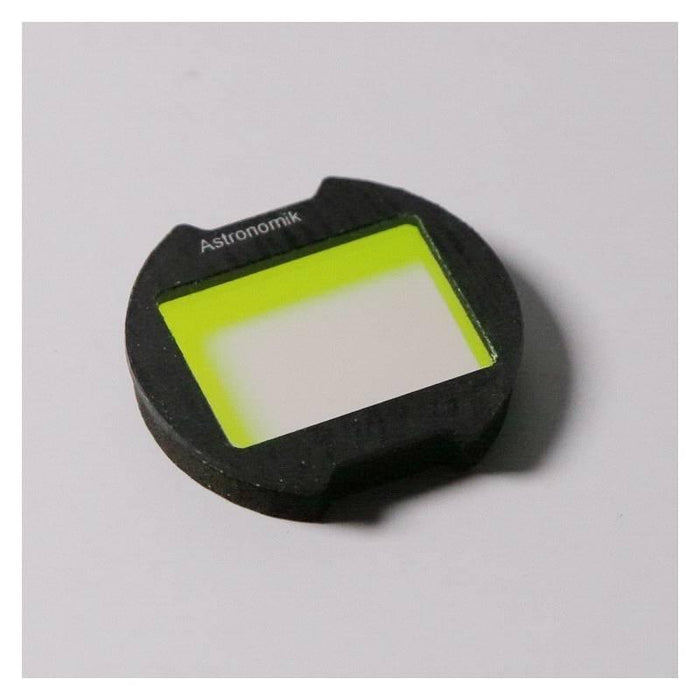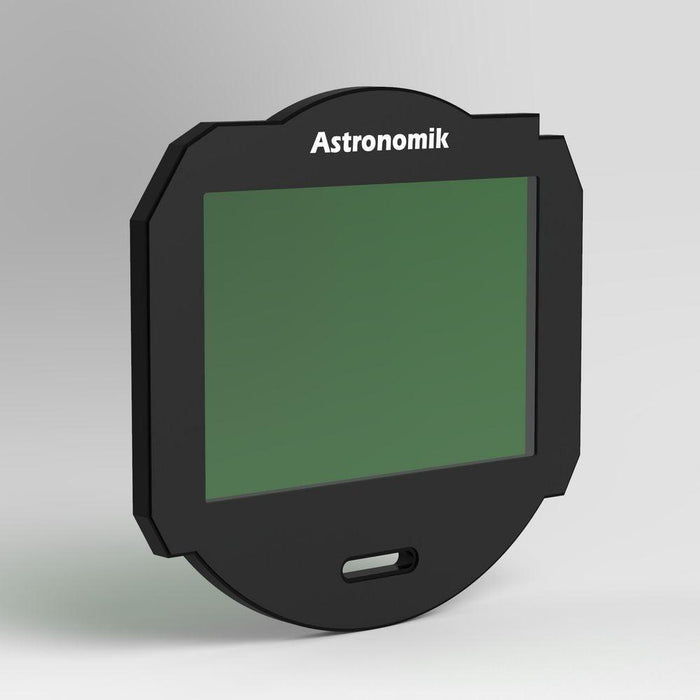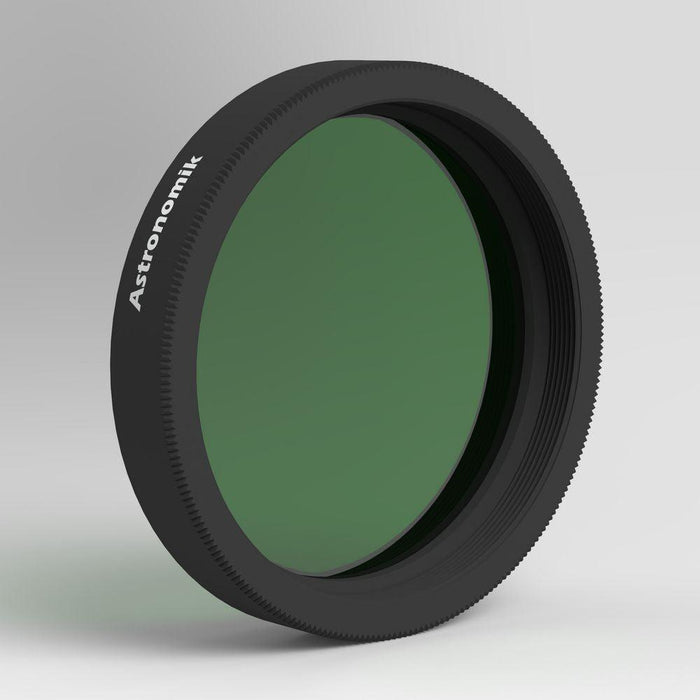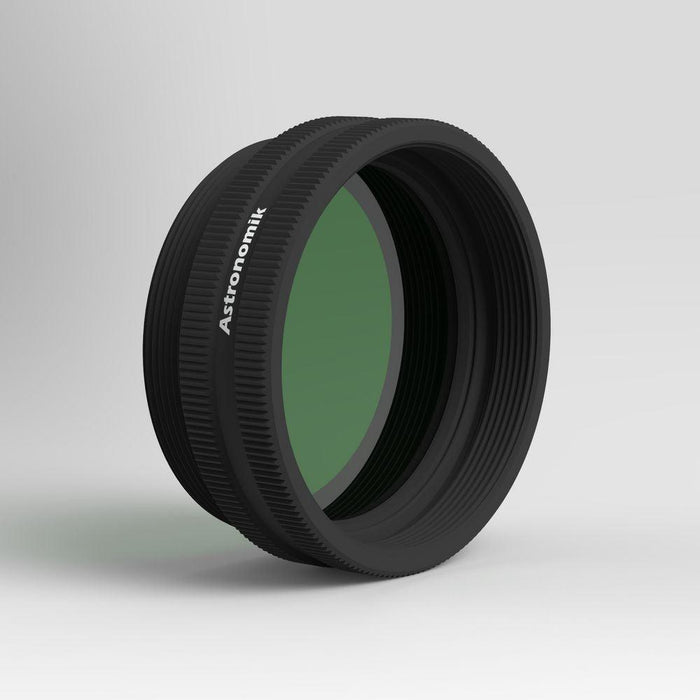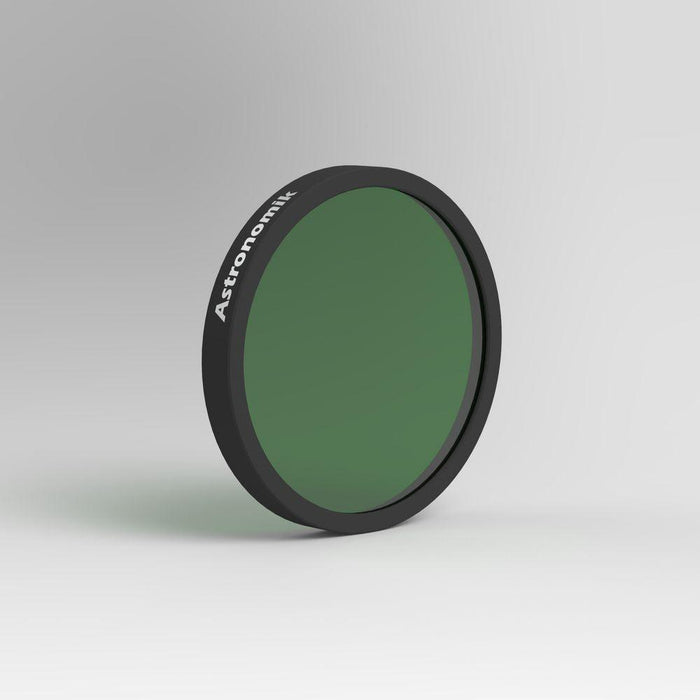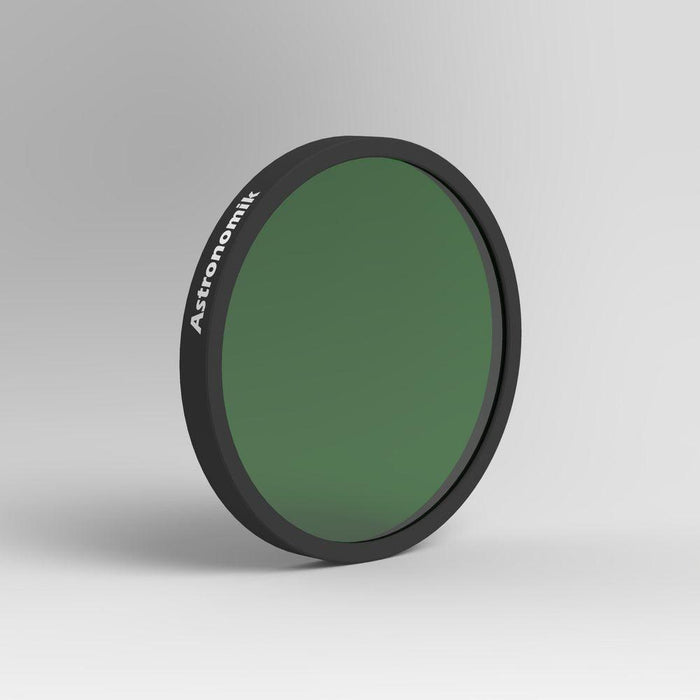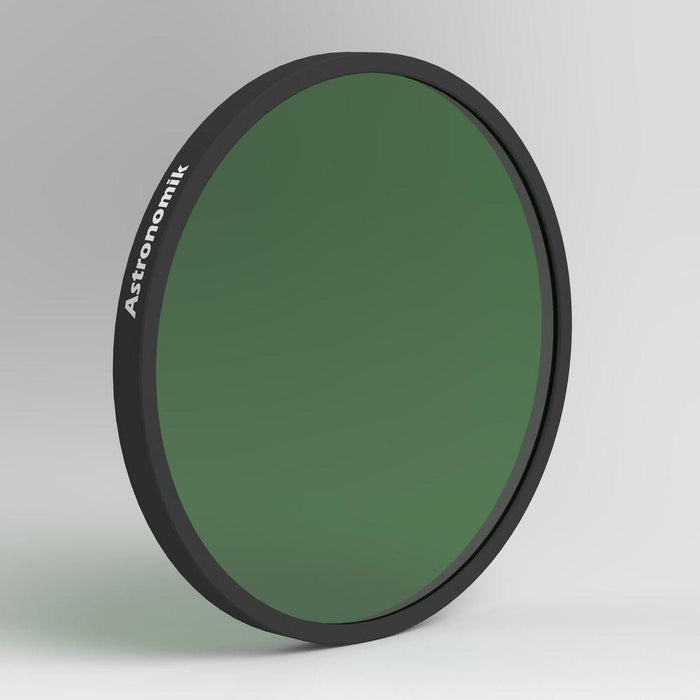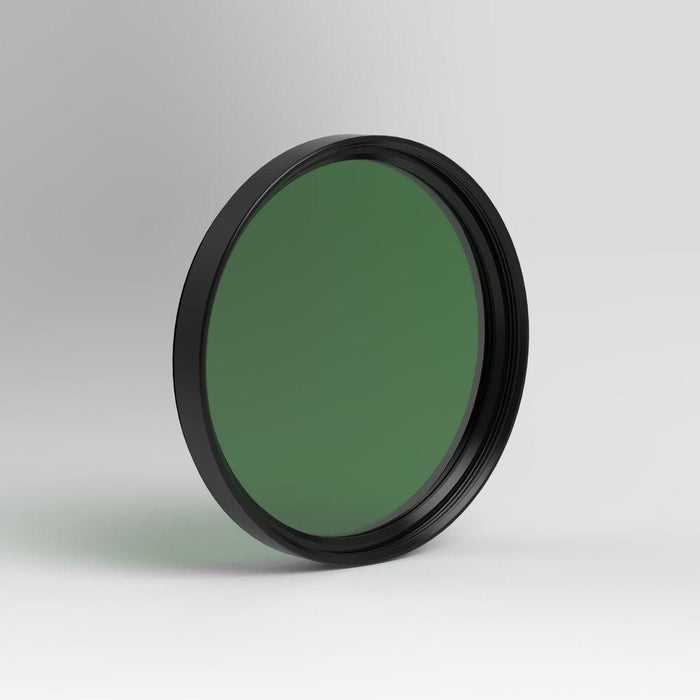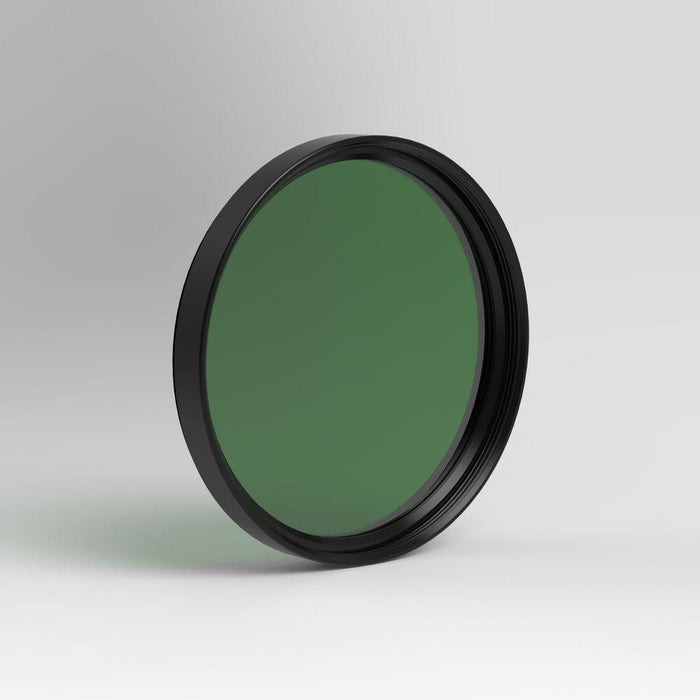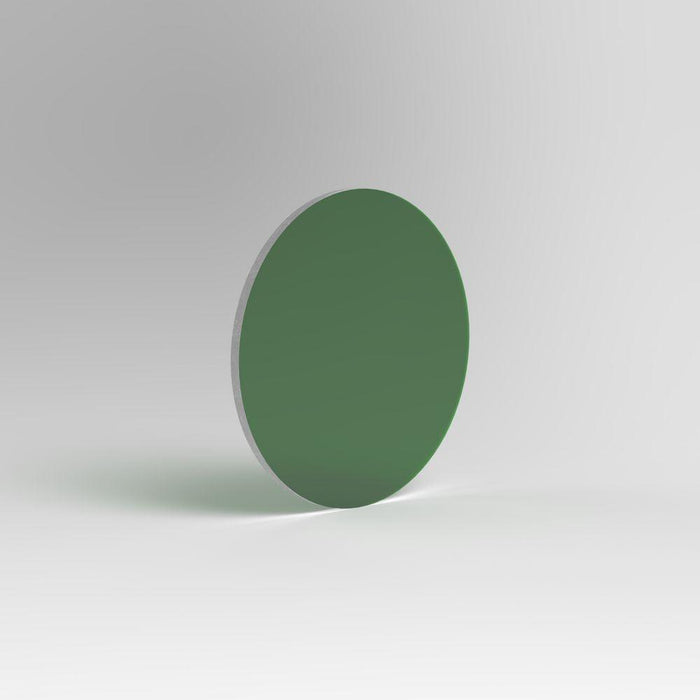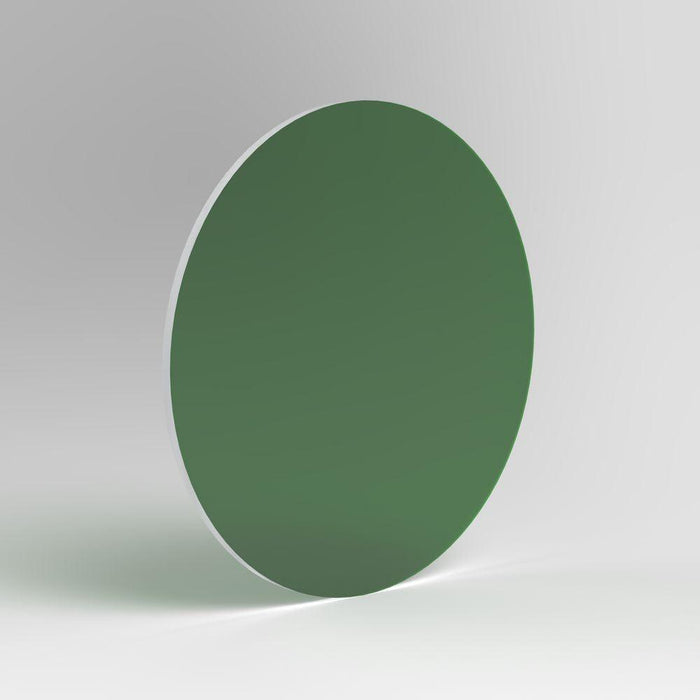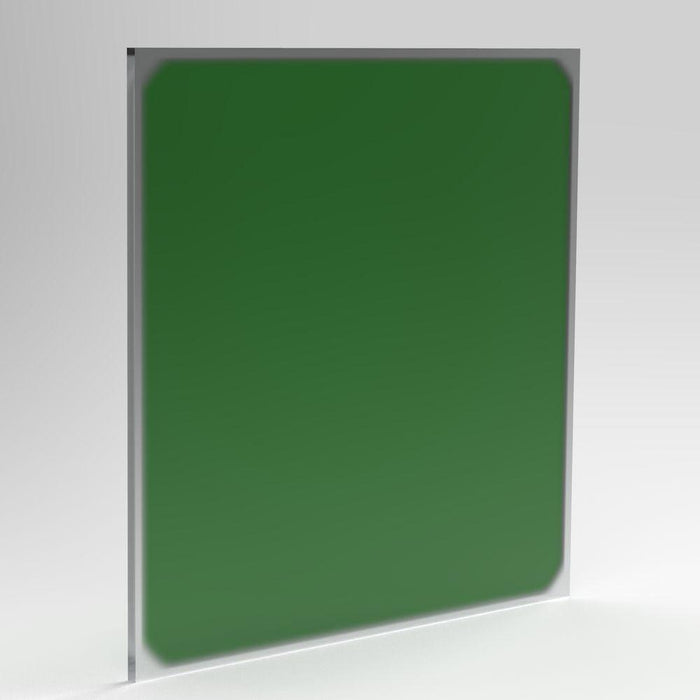Astronomik OIII 12nm CCD Filter
This Astronomik OIII-CCD Filter is suitable for imaging of OIII nebulas from observation sites with light pollution and from dark sites as well. The contrast between an object glowing at 501nm and the background is increased enormous!
Due to the combination of the narrow bandwidth of 12nm and the high transmission of typically 96% the filter gives you an contrast boost, as all unwanted light from other wavelengths than 501nm is blocked form UV up to the IR. This results in an very dark background compared with any filters with a higher bandwidth
The FWHm of 12nm is optimized for typical DSLR cameras with CMOS sensors and CCD cameras with a normal/high dark current: With these cameras the background signal in images taken from heavily light polluted sites is dominated by the dark current of the sensor, not by fluy coming from light pollution. In this case a further reduction of FWHM does not improve the image, as the background will not get darker. Compared to the 6nm filters you have more stars in the field of view which gives you more guiding stars when working with an integrated/dual guiding chip!
Due to the new MFR coating technique you may use one single filter on all instruments up to f/3 without a significant reduction in performance.
Der Astronomik H-alpha filter MUST NOT BE USED for solar observation!
Imaging with Narrowband-Emissionline Filters
If you have to observe from light polluted sites (like most of us...), imaging with Narrowband-Emissionline filters is the best way to take great images, as all kind of light pollution can be blocked very effective! Normaly an H-alpha filter should be your first step into this amazing field of astrophotography! With an Narrowband H-alpha filter you will be able to take deep and contrasty images even wih very heavy light pollution or with the full moon high up in the sky!
If you look at other astrophotos, an H-alpha is the best choice for all nebulas glowing red! An OIII filters expands your imaging possibilities, as you are able to image all greenish/blueish structures. Planetary nebulas and star forming regions are great targets! The SII filters completes your HSO-set of filters. With these three filters you are able to process your images like the ones from the Hubble space telescope!
The h-beta filter is not available in a 6nm version, as this filter has nearly no meaningfull application. To illustrate this, there are two images shown below: Both were taken with a unmodified Canon 650D. Even as the camera has a sensitivity of less than 10% at H-alpha, there is some signal und structure in the h-alpha image, while you cannot see anything on the image taken with an H-beta filter!
Operation of the filter:
The filter blocks all unwanted light from artifical light-pollution, natural airglow and moonlight. Especially light from High- and Low-Pressure Sodium and mercury lights and all lines of natural airglow are 100% blocked. The filter increases the contrast between the sky-background and objects glowing at the xx line at xy nm.
Tips and Hints for more applications:
Using the OIII filter together with H-alpha-CCD and SII-CCD filters you make produce false-color emission line images (HSO) in the same way as the Hubble-Space telescope. This is possible even from heavyly light polluted sites
Alternatives:
If want to image faint objects in starcrowded regions of the milkyway, propably using short focal lengths, the 6nm filter will be the better choice, as the number of stars is reduced by a factor of ~2. You should even take the 6n mversion if you have a camera with a low thermal current or if you have to observe from a really heavily light polluted site.
_________________________________
All Astronomik Filters are perfect for modern cameras, including both CMOS and CCD based cameras, allowing you to capture the very best images possible with your instruments. Sharpness, contrast and the absence of any reflections is guaranteed.
Each and every Astronomik filter has to pass a complex quality control process before being suitable for delivery to our customers. Each and every emission line filter is measured with a high-end Perkin-Elmer spectral-photometer to make sure that every single filter is up to the specifications published on our website.
On the back of each filter-box you will find a label that details the precise sensitivity and band pass measurements for that individual filter inside the box: You will see the max transmission and the recommended range of focal ratio were the filter will give you the best performance.
_________________________________
Technical Specifications
- Guaranteed Transmission of more than 90% at the OIII Line (501 nm)
- Typical Transmission of 95% at the OIII Line (501 nm)
- Full-Width-Half Maximum (FWHM): 12nm
- perfect blocking of unwanted light from UV up to the IR
- parfokal with all Astronomik filters
- MFR Coating technique: Usable with all optics up to f/3
- Thickness of 1mm
- Not sensitive to moisture, scratch resistant, not aging
- opticaly polished substrate, striae-free and free of residual stresses
- High quality storage box
In the Box
- Selected frame size Astronomik OIII 12nm CCD Filter
- Plastic Storage Case
Manual & Warranty
Astronomik 10 year warranty
